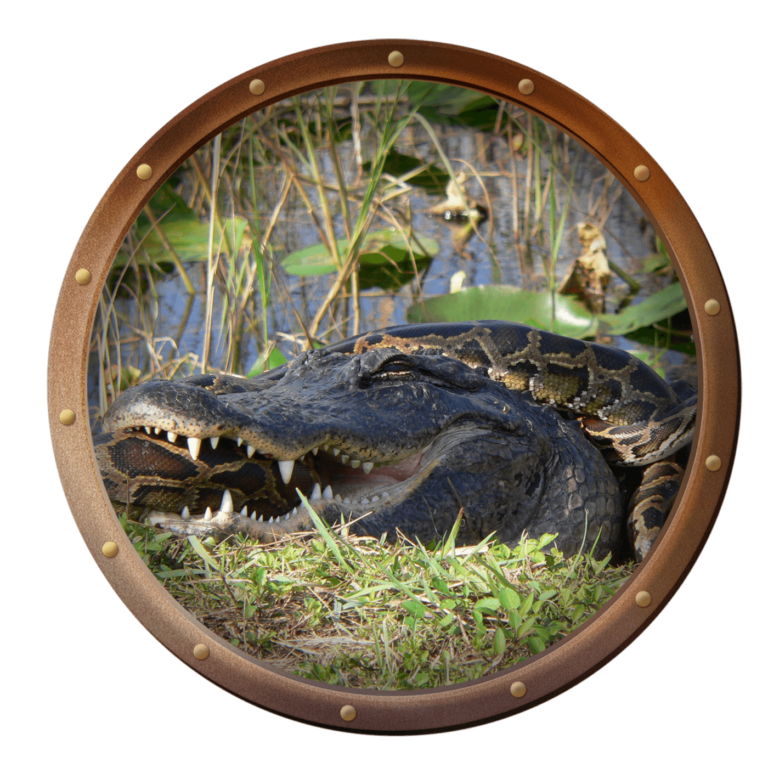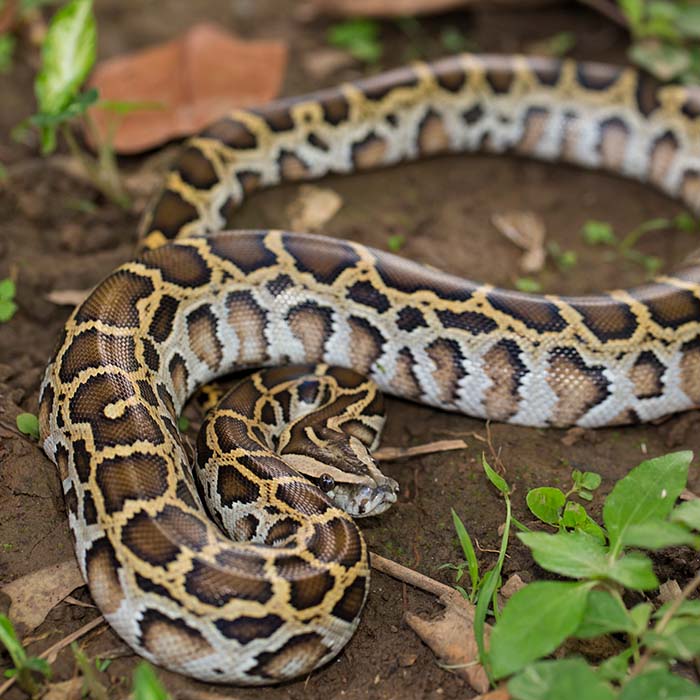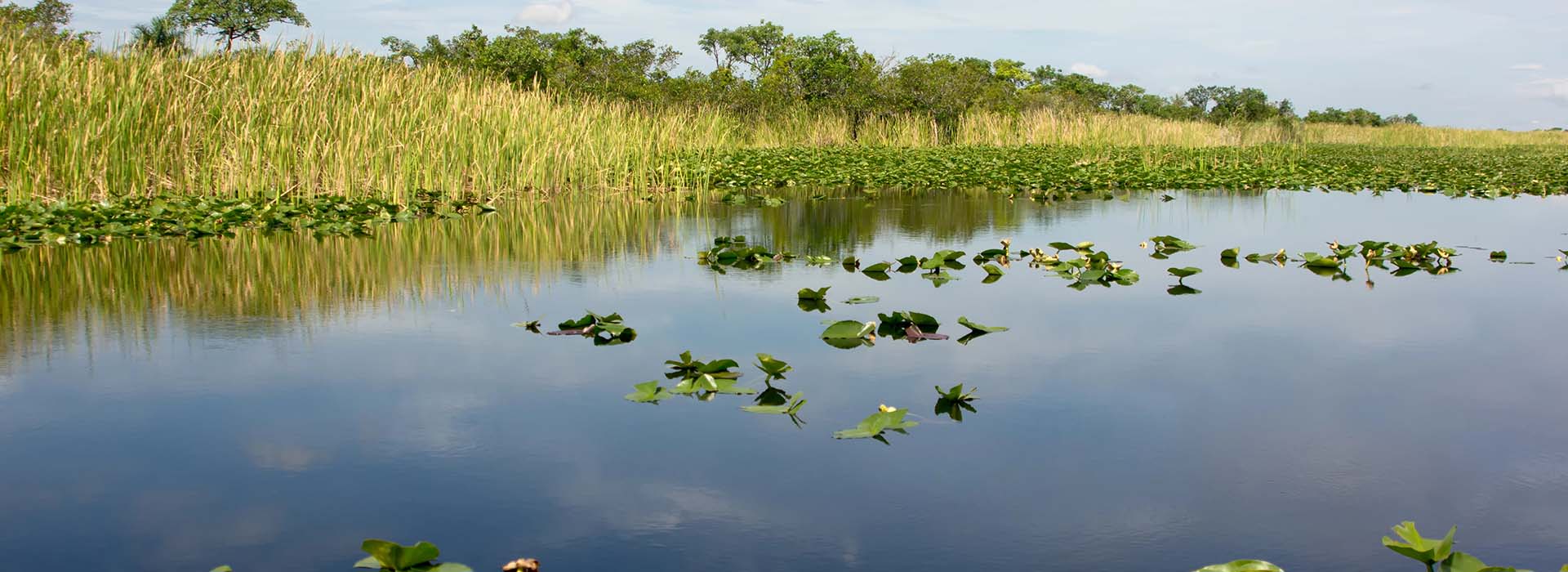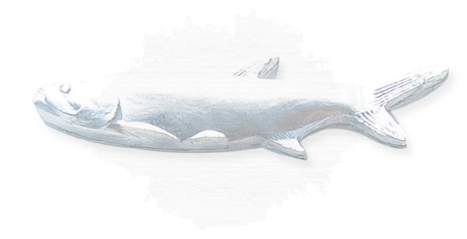The Burmese python, Python molurus bivittatus, is a giant nonvenomous constrictor introduced to Florida through the pet trade and is now classified as an invasive species. These snakes threaten the Everglades ecosystem by competing with and preying upon native wildlife and acting as vectors for disease and parasite spread.
Pythons were first imported into Florida through the exotic pet trade, and reports of escaped pet pythons date back to the early 1900s, including a mention of a Burmese python in the Florida Everglades in 1912, with sporadic sightings reported into the 1970s. The snakes were most likely escaped or released pets but did not represent an established breeding population in the state. The popularity of pythons as exotic pets took off in the 1970s and 1980s, and snakes were not only imported from Southeast Asia but bred in captivity. This increase in popularity coincided with an increase in people releasing their pets into the Florida Everglades once they became too large or complex to care for. Enough snakes were released, and a breeding population was established throughout South Florida.
South Florida, particularly the Everglades ecosystem, is the perfect habitat for these snakes. The subtropical climate; mix of tree, brush and marsh habitat; and abundant prey with few large predators allowed the snakes to flourish. Burmese pythons are skilled ambush predators with a color pattern that enables them to blend in with dense foliage, heat-sensing pits on their faces and the ability to sit motionless for days as they wait for prey to pass by. They consume various prey items and have few predators in Florida, especially once they reach adulthood. The primary predator of Burmese pythons in Florida is the American alligator. However, it is difficult to tell whether alligators have acted as the direct predators or are opportunistically feeding on dead pythons. Ironically, other invasive species to South Florida, including Nile monitor lizards, spiny-tailed iguanas, and Argentine black and white tegus, threaten Burmese python eggs, hatchlings and young snakes.

Female Burmese pythons mature at 24 to 36 months and can have their first clutch of eggs at around three years of age. Clutch size increases with the mother’s size, with reports of nests containing 11-84 eggs. Female Burmese pythons build nests in higher elevation areas and stay with their eggs until they hatch. The incubation period lasts two to three months and depends on temperature. The female pythons exhibit a high degree of parental care. They defend the nest from predators, prevent the eggs from drying out and are even known to increase the nest’s temperature by creating body heat through muscle contractions. The high investment in caring for the eggs leads to a high hatchling success rate, with some reports observing 95% of eggs resulting in hatchling snakes. The baby Burmese pythons are larger than the hatchlings of native snake species in Florida, which gives them a competitive advantage. While there is no good data on wildlife span, Burmese pythons have been known to live for 30 years in captivity and have been recorded to live past 10 years in the wild.

One of the traits that makes Burmese pythons so successful is their generalist diet, which has also made them particularly harmful to the ecosystem they have invaded. A Burmese python can consume 200 lbs of food in the first five years of their life! They consume over 76 species of small mammals, birds and reptiles. These snakes are predators of the endangered Key Largo woodrat and the federally threatened wood stork, among other vulnerable species. This harms the prey species and the native predators that rely on them. The Florida panther is a direct competitor of the Burmese python for small prey, including marsh rabbits, giant white-tail deer and wild hogs. Burmese pythons have had dramatic impacts on the food web and declines in ecosystem function where they are established, effectively wiping out some populations of small mammals and fundamentally changing the trophic structure of the area.

The establishment of Burmese pythons in Florida is now considered one of the world’s most challenging invasive-species management problems. Several strategies have been implemented to eradicate and control the spread of Burmese pythons, but long-term effectiveness remains to be seen. In 2017, the Florida Fish and Wildlife Conservation Commission (FWC), in partnership with the National Park Service and South Florida Water Management District, implemented a removal program that paid individual contractors or trained volunteers to remove pythons in Southern Florida. Programs such as the FWC’s “Python Challenge” provide cash prizes and incentivize people to go out and remove pythons. To date, over 14,000 Burmese pythons have been removed through these programs. While this is an impressive number, the problem is still growing. Other strategies to manage the python population include employing “scout snakes,” which are radio-tagged individuals that lead to other snakes during the breeding season; trapping; altering pheromones of reproductive males; and training python detector dogs. Eradication of the Burmese python in the Florida Everglades is highly unlikely, given the size and inaccessibility of the area and how difficult it is to detect the snakes. Research into management strategies is ongoing, and there are opportunities for citizen scientists to get involved!

Did You Know?
Did you know the Burmese python is one of the six largest snakes in the world? It is also the largest subspecies of the Indian python. Native to a wide variety of tropical and subtropical areas of Asia, Burmese pythons are often found near water. Sometimes, they exhibit semiaquatic traits and hide in trees. Wild individuals average 12 feet long but may reach up to 19 feet.


